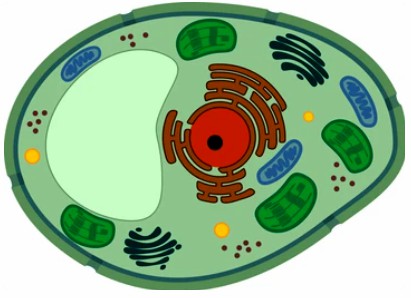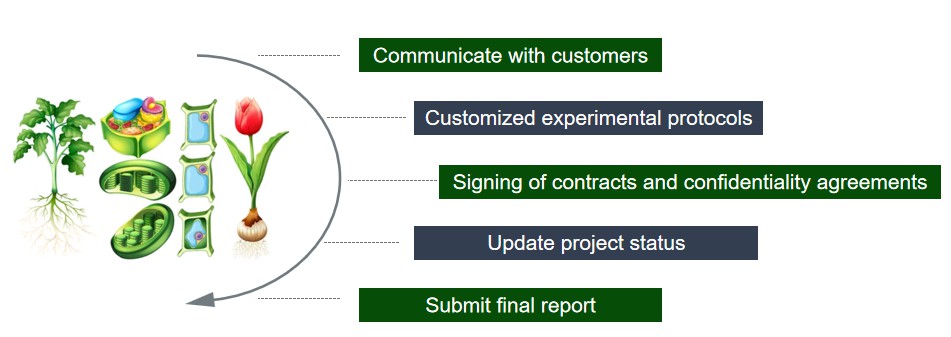Detection of Plant Cell senescence
Plant cell senescence, a highly regulated and programmed cellular process, plays a pivotal role in the life cycle of plants. Senescence is a natural process encountered by almost all living things, and harsh natural environments and diseases can accelerate it. This phenomenon involves a series of intricate molecular and biochemical events that ultimately lead to the programmed death of cells, contributing to the overall growth and development of the plant.
Understanding plant cell senescence is crucial not only for unraveling the mysteries of plant biology but also for agricultural applications and crop improvement strategies. Some indicators of plant senescence include a decrease in photosynthetic rate, a sudden change in respiration rate, a sudden decrease in the content of macromolecules, an increase in the activity of hydrolytic enzymes, and a burst of reactive oxygen species. These detection methods are cumbersome, and there are fewer ways to monitor senescence signals directly. Lifeasible has many years of experience in plant cellular senescence detection, and we offer various effective detection methods based on the problems faced in plant cellular senescence detection.

Detection methods of plant cell senescence
- Molecular markers and gene expression analysis. One of the most robust methods for detecting plant cell senescence involves molecular markers and gene expression analysis. By identifying and analyzing critical genes associated with senescence, we can help researchers gain insights into the underlying regulatory networks.
- Physiological changes and biochemical assays. Monitoring physiological changes and employing biochemical assays is another practical approach for detecting plant cell senescence. This includes measuring chlorophyll content, as chlorophyll degradation is a hallmark of senescence. Additionally, assessing parameters such as lipid peroxidation, reactive oxygen species (ROS) production, and changes in enzymatic activities provides a comprehensive understanding of the biochemical alterations occurring during senescence.
- Imaging Techniques. Advancements in imaging techniques have revolutionized the detection of plant cell senescence at the cellular and tissue levels. Using fluorescence, confocal, and hyperspectral imaging, we can help researchers visualize senescence-related changes, such as organelle degradation and pigment redistribution, with high precision.
In addition, plants maintain a certain transmembrane potential (TMP) inside and outside the cell membrane. The stability of TMP is the basis for normal cell metabolism, sudden changes in the environment will lead to cellular stress, and the TMP will be altered in response during this process. Therefore, we also provide a TMP assay based on this feature, which can be used to monitor the senescence signals of plant tissues and cells in situ, and can also reflect the response pattern of plants to environmental stress.
Significance of detecting plant cell senescence
- Crop improvement and agriculture. Detection of plant cell senescence is crucial for developing strategies to enhance crop yield and quality. By deciphering the regulatory mechanisms controlling senescence, researchers can manipulate these processes to prolong the productive lifespan of crops, leading to increased agricultural productivity.
- Stress response and adaptation. Plant cell senescence is intricately linked to stress responses, including biotic and abiotic stresses. The ability to detect senescence allows for the identification of stress-induced signaling pathways, enabling the development of plants with enhanced stress tolerance and adaptability.
- Phytoremediation and environmental monitoring. In phytoremediation, the detection of plant cell senescence aids in identifying plants that efficiently absorb and accumulate pollutants. This has implications for environmental monitoring and the development of sustainable solutions for soil and water purification.
- Biotechnological applications. The knowledge gained from detecting plant cell senescence has wide-ranging biotechnological applications. From designing genetically modified plants with altered senescence patterns to developing senescence-related biomarkers for diagnostic purposes, the impact extends beyond agriculture to medicine and industry.
Our services workflow

Lifeasible is always on the cutting edge of technology, and we utilize a variety of advanced methods to measure plant senescent cells efficiently and accurately. If you are interested in us, please feel free to contact us.
For research or industrial raw materials, not for personal medical use!

